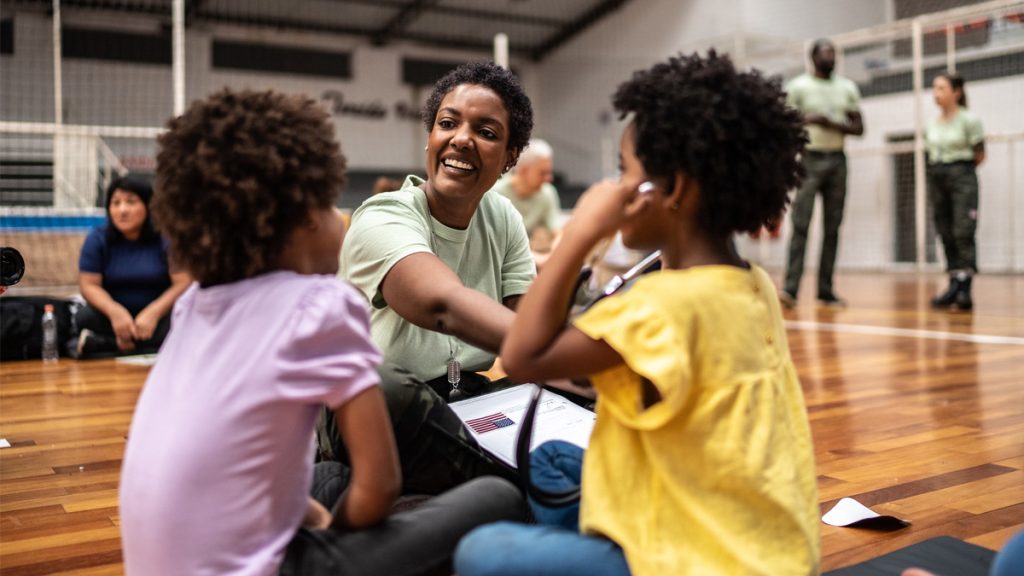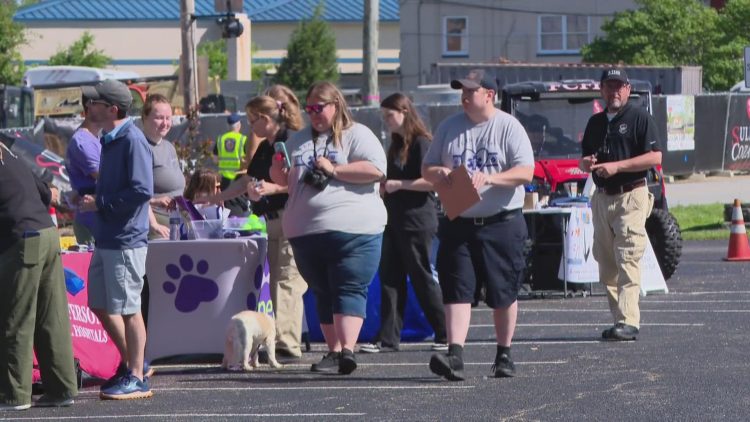In the heart of bustling neighborhoods, local community centers are quietly leading a revolution in healthcare—not with high-tech hospitals or private clinics, but through simple, innovative “wellness pop-ups.” These temporary yet impactful setups, often known as “health corners,” are changing the narrative around preventive care by bringing basic health screenings, educational resources, and personal engagement directly into the places where people live, gather, and trust. At a time when healthcare systems worldwide are stretched thin and preventable illnesses continue to rise, wellness pop-ups represent an essential shift in how we think about access, outreach, and the role of community.
The Rise of Health Corners in Everyday Spaces
Walk into a local library, church hall, recreation center, or even a farmers market in many cities today and you may come across a modest booth draped with blood pressure cuffs, glucose monitors, flyers on healthy eating, and a welcoming volunteer in scrubs. These are health corners—temporary health hubs designed for quick, accessible check-ins on key wellness indicators. What began in underserved neighborhoods as grassroots public health interventions has grown into a model now replicated by public health departments, nonprofit organizations, and even municipal governments. Their aim is simple yet transformative: catch health problems early, offer real-time advice, and connect people with long-term resources before a crisis develops.
Preventive Care Without the Barriers
For many individuals, particularly those from marginalized or low-income backgrounds, traditional healthcare systems can feel inaccessible or even intimidating. Factors like lack of insurance, transportation difficulties, language barriers, and historical distrust of medical institutions create an invisible wall between people and preventive care. Wellness pop-ups bypass many of these obstacles by embedding services within the community. There’s no need for an appointment, no complex paperwork, and no clinical coldness. Instead, there’s a friendly face, a blood pressure reading, a quick chat about diet, and a pamphlet on local clinics. These health corners meet people where they are—physically, emotionally, and socially.
What a Wellness Pop-Up Offers
While the scale of services varies depending on the organization and resources, most wellness pop-ups provide the following:
- Basic screenings: Blood pressure, BMI, blood glucose, cholesterol, vision tests, and sometimes dental or mental health checks.
- Educational materials: Easy-to-understand brochures and visual guides on nutrition, exercise, managing chronic illness, and avoiding substance abuse.
- On-site counseling: Short sessions with nurses, social workers, or wellness coaches offering personalized tips and resource referrals.
- Referrals: Direct connections to nearby clinics, insurance enrollment support, vaccination centers, or specialists.
Some pop-ups go further by hosting workshops on topics like mindful eating, CPR training, or yoga and movement classes, turning what might feel like a check-up into a community wellness event.
Trust Is the Foundation
One of the most powerful advantages of wellness pop-ups is their location within trusted environments. Community centers, churches, and schools are places where residents feel a sense of safety and familiarity—critical elements in breaking down resistance to medical outreach. By positioning healthcare within these institutions, health organizations are not just improving access—they’re repairing relationships. The presence of community health workers, often from the same cultural or linguistic backgrounds as the populations they serve, further builds trust. People are more likely to open up about their health when they don’t feel judged, rushed, or spoken down to. In this sense, wellness pop-ups are as much about emotional care as physical health.
Cultural Competency and Representation
Another key element of success in these initiatives is cultural competency. Health advice and outreach must be tailored to the cultural norms, beliefs, and dietary practices of the local population. A one-size-fits-all pamphlet on heart health is less effective than a conversation with someone who understands your community’s eating habits, economic challenges, and healthcare history. Many wellness pop-ups partner with local cultural organizations to ensure relevance and resonance. For example, a pop-up in a predominantly Latino neighborhood might offer materials in Spanish, focus on culturally relevant foods in nutrition discussions, and staff the booth with bilingual health workers.
Building Habits, Not Just Offering Services
The goal of wellness pop-ups isn’t just to perform a one-time screening—it’s to plant a seed. A blood pressure reading today might lead someone to schedule their first primary care appointment in years. A quick mental health chat could encourage someone to explore therapy or a support group. These small interventions ripple out, shifting mindsets and behaviors over time. Repetition helps reinforce this impact. Many centers run monthly or quarterly pop-ups, ensuring that wellness becomes a familiar, regular part of community life—not something only accessed in times of crisis.
Pop-Ups as Educational Engines
In addition to physical checkups, many pop-ups serve as informal learning spaces. Visitors often leave not only with biometric data but with new insights about how to read food labels, understand their prescription medications, reduce sodium intake, or recognize the early signs of diabetes. Interactive elements—like spinning a “wellness wheel” for prizes or tasting healthy snack samples—keep the experience fun and engaging. For parents, pop-ups often include family-focused education such as healthy lunchbox demos or child wellness screenings, building a culture of care across generations.
Public-Private Partnerships Driving Impact
Wellness pop-ups are most successful when powered by collaboration. Municipal health departments often work with nonprofits, academic institutions, and even private sponsors to fund and staff these initiatives. Pharmacies may donate equipment, medical students may volunteer, and local restaurants may provide nutritious refreshments. These partnerships extend the reach and legitimacy of the effort while embedding health more holistically into community life. In some cities, even fire stations and barber shops have become semi-permanent pop-up sites, blurring the line between everyday spaces and health hubs.

The Role of Data and Follow-Up
Collecting data is another crucial function of pop-ups. Screening results can help track community health trends over time, identify hotspots for chronic illness, and inform policy decisions. However, privacy and consent are essential—data should be collected ethically and used solely for the purpose of improving services. Follow-up is equally important. The best programs don’t just screen and forget; they follow up with phone calls, home visits, or appointment reminders, ensuring that people continue along the path to better health.
Combating Health Misinformation at the Source
In an age of rampant misinformation, wellness pop-ups serve as ground-level fact-checkers. Trusted community health workers can correct myths about vaccines, nutrition, or chronic disease in a personal and respectful way. By being visible and consistent, these health corners become known as reliable sources of information. They empower individuals to make informed decisions, replacing fear with clarity.
Addressing Mental Health with Care and Compassion
As mental health becomes a growing concern globally, wellness pop-ups are increasingly expanding their scope beyond physical screenings. Brief mental health check-ins, stress-reduction workshops, and even trauma-informed yoga sessions are now part of the toolkit. For many, this may be the first time they’ve talked about their emotional well-being with a health professional. Normalizing these conversations in a community setting reduces stigma and opens the door to healing.
Tips for Setting Up a Wellness Pop-Up
For communities or organizations considering starting a wellness pop-up, here are key steps to ensure effectiveness:
- Partner with trusted community leaders to build credibility and increase attendance.
- Offer services that reflect real community needs, based on surveys or demographic data.
- Ensure multilingual materials and staff to accommodate diverse populations.
- Make the experience welcoming and non-clinical, with comfortable seating and friendly faces.
- Incorporate fun, interactive elements to increase engagement, such as raffles or cooking demos.
- Prioritize follow-up and referrals to ensure sustained health benefits.
- Create regularity and consistency, so community members know when and where to access services.
Looking Ahead: A Scalable, Human-Centered Health Model
Wellness pop-ups are not a replacement for traditional healthcare—they’re a complement and a bridge. They’re especially vital in rural, underserved, or immigrant-heavy communities, but their value is universal. As urban centers become more dense and healthcare systems more complex, the simplicity of wellness pop-ups offers a refreshing counterbalance: care without bureaucracy, advice without judgment, and prevention without pressure. These humble health corners remind us that the future of healthcare is not just in technology or policy, but in relationships, conversations, and community-rooted care.
Conclusion: Health Starts in the Neighborhood
Wellness pop-ups have proven that preventive care doesn’t need to be complicated or centralized to be effective. By bringing health into the everyday rhythms of community life, they make care more human, accessible, and trusted. In doing so, they foster a culture of wellness that is proactive, inclusive, and deeply empowering. Whether it’s a quick screening at a senior center or a child’s first eye test at a school fair, these moments matter. They are the building blocks of a healthier, more connected future—one neighborhood at a time.

















































